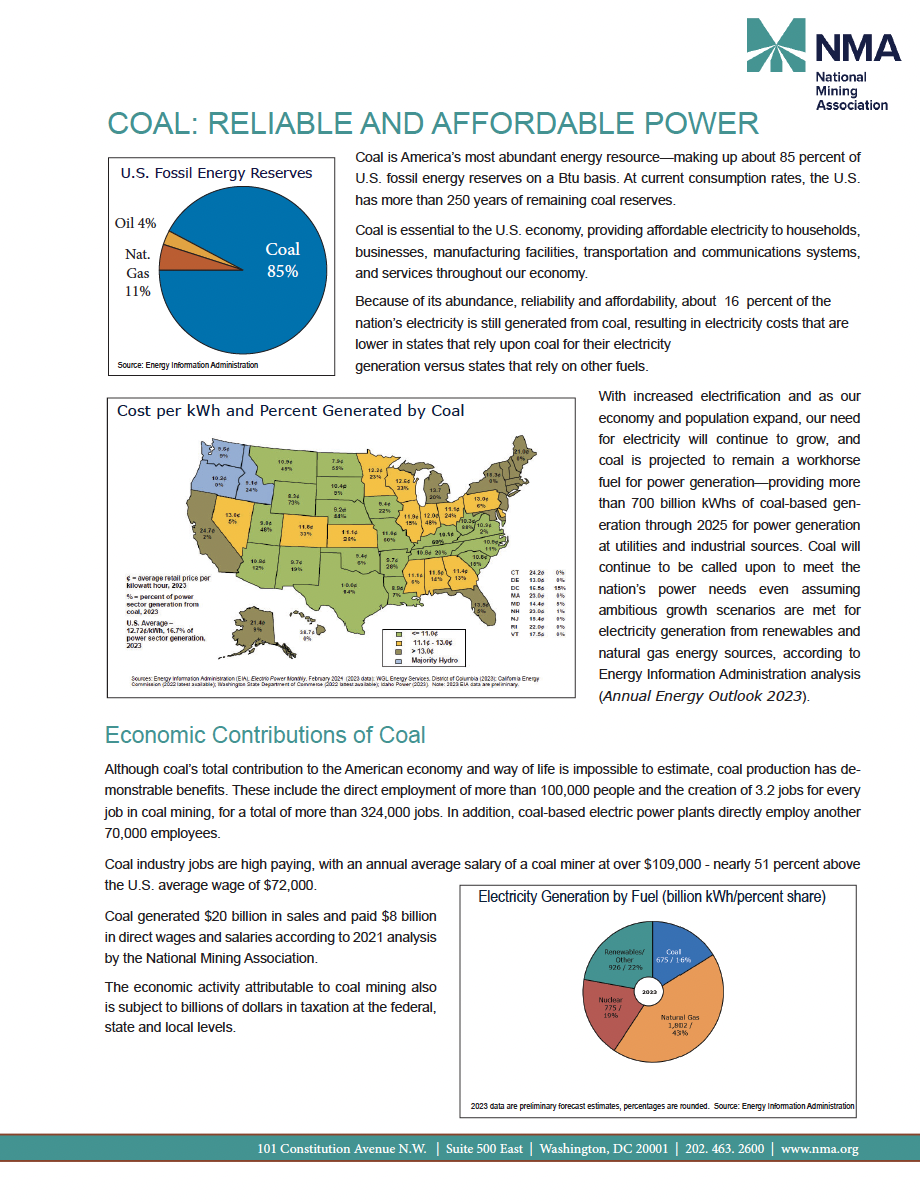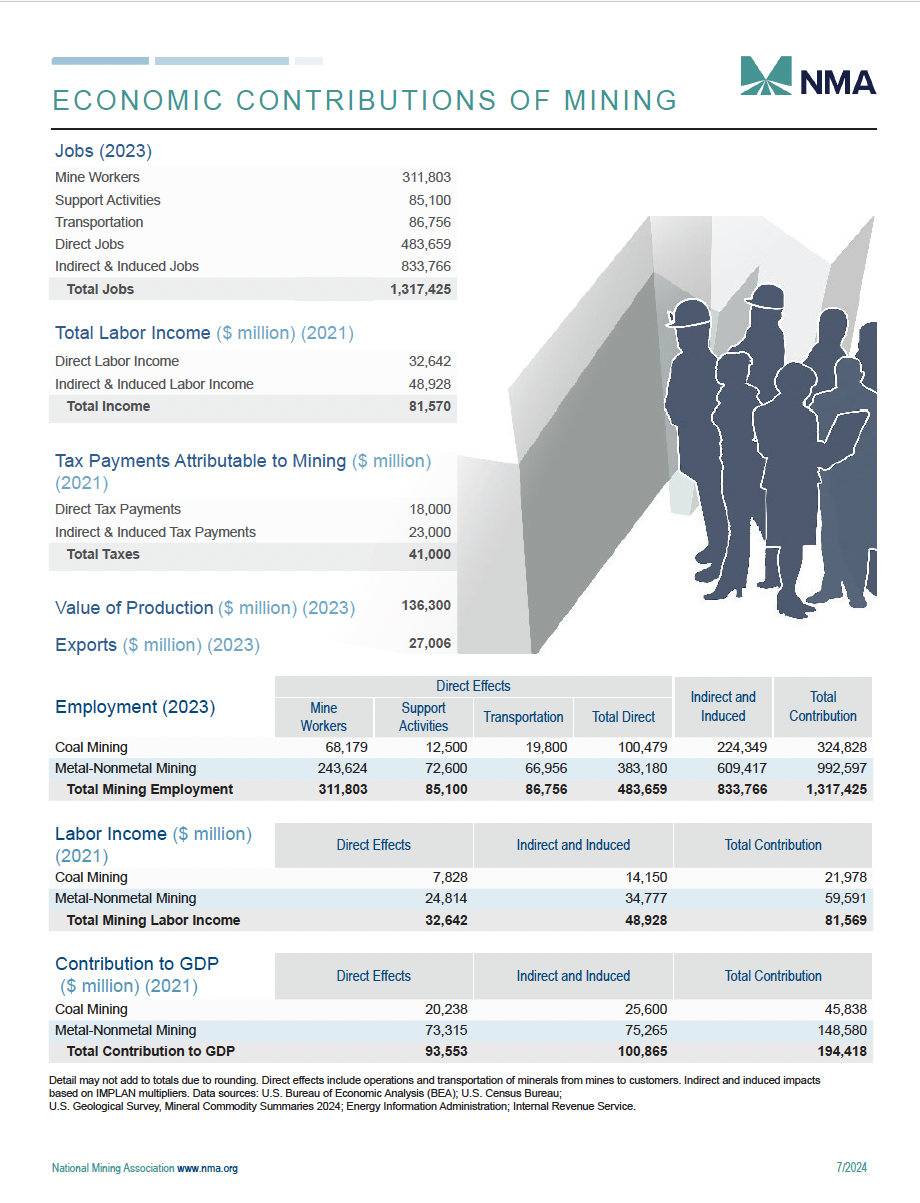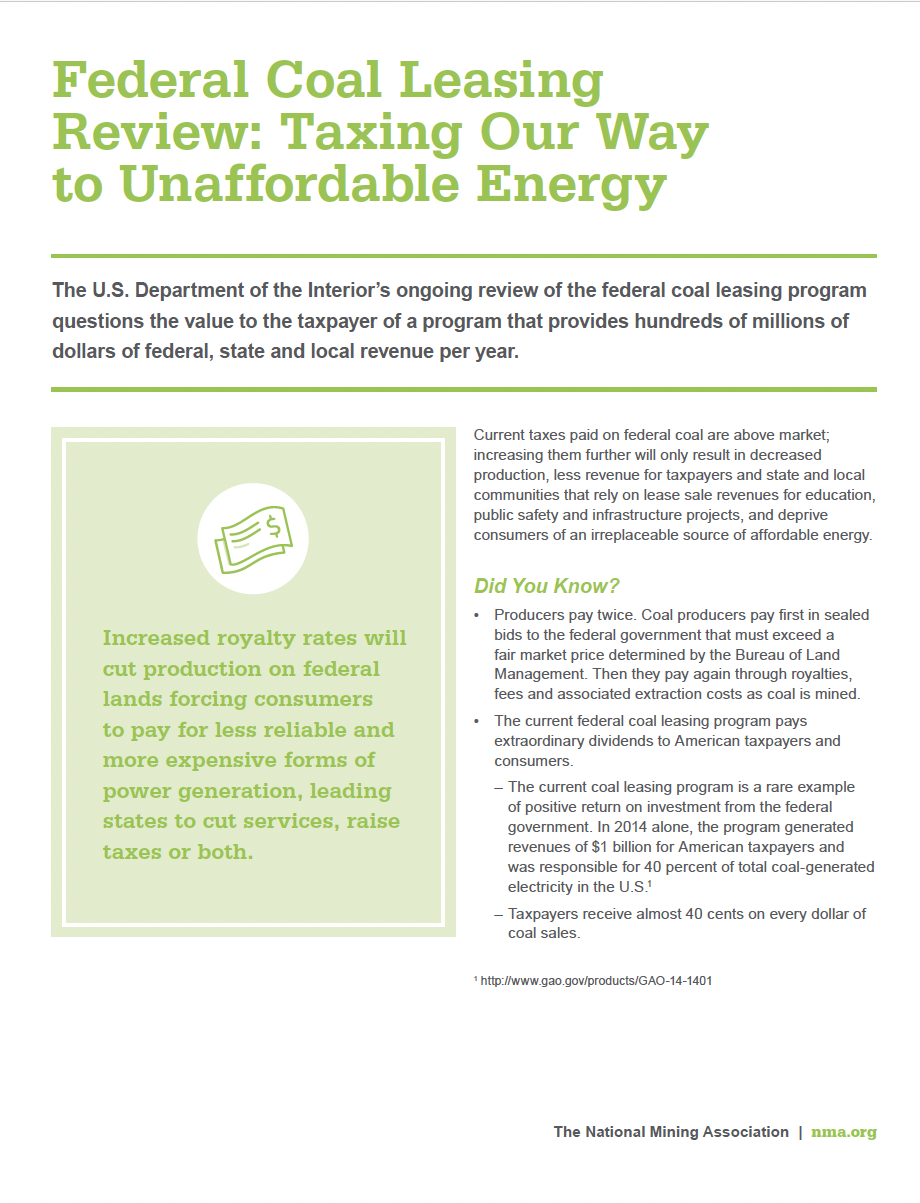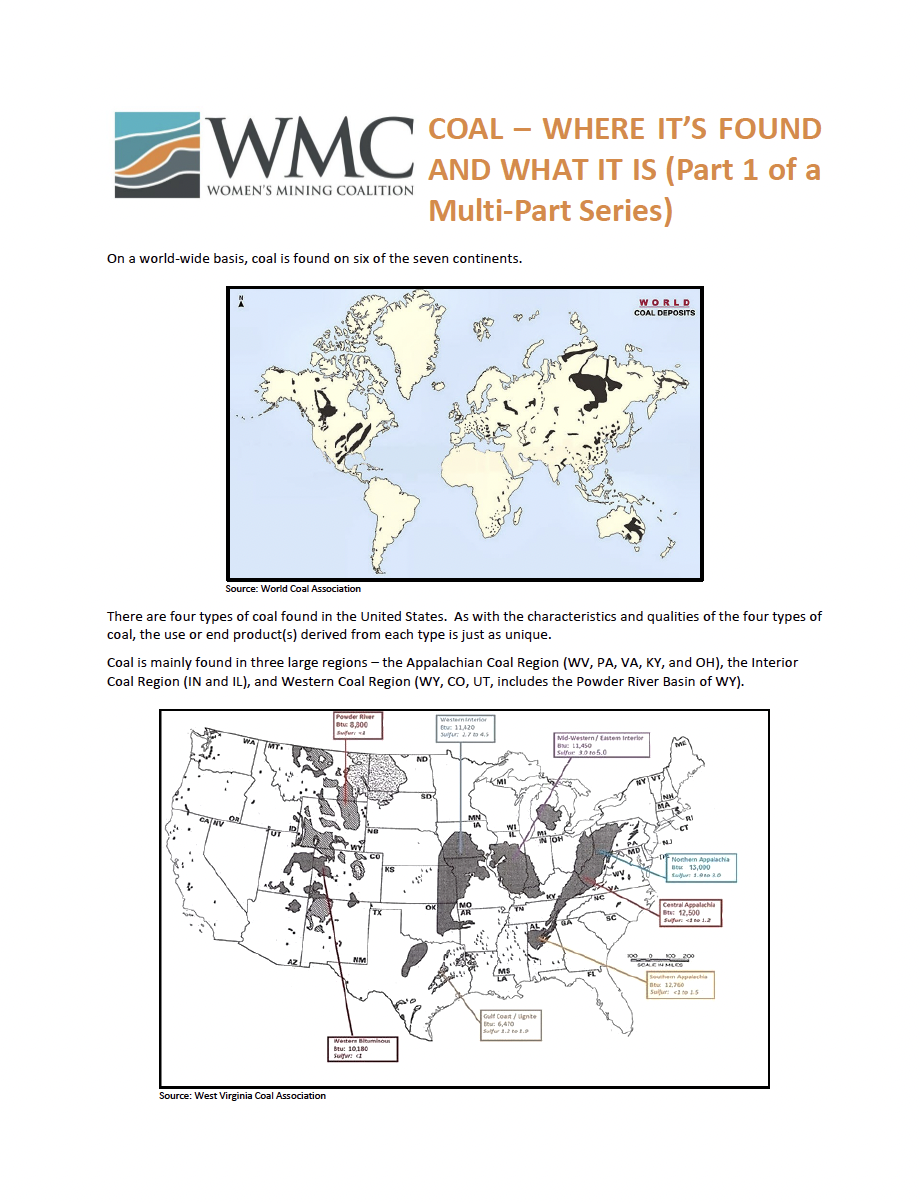Education
Fast Facts
About Mining
Coal is a carbonaceous sedimentary rock. It is formed from organic matter and contains carbon and other elements, such as hydrogen, oxygen and nitrogen. Most coal was formed 280 to 345 million years ago as trees, ferns and other plants decomposed and were buried under prehistoric seas and swamps. Pressure and temperature compressed and altered the plant remains, concentrating carbon content, and over millions of years, transformed the material into coal.
If you have turned on a light, entered a building, driven on a road, made a phone call, used a computer, or visited a doctor, then mining is an important part of your life. - National Mining Association
Energy 101 provided by LIFE: Powered
Energy 101: Why We Need Electricity, https://youtu.be/ZfrBnddgFAU
Energy 101: The Electric Grid, https://youtu.be/WiMtU6O1SxM
Energy 101: Where Electricity Comes From, https://youtu.be/AKuoIeupGHc
Energy 101: Energy Density, https://youtu.be/6d-HGzZHPG4
Energy 101: Mining and Rare Earths, https://youtu.be/yu3mkFpiGmo
Energy 101: Environmental Technology, https://youtu.be/aodsngzbZqA

U.S. Demand:
- Coal is America’s most abundant energy resource—making up 87% of U.S. fossil energy reserves on a Btu basis
- Coal is essential to the U.S. economy, providing affordable electricity to households, businesses, manufacturing facilities, transportation and communications systems, and services throughout our economy.
- Because of its abundance, reliability and affordability, about 28% of the nation’s electricity is generated from coal, resulting in electricity costs that generally are 30 percent lower in states that rely upon coal for more than half of their electricity generation versus states that rely on other fuels.
- Every American uses an average of 40,000 pounds of newly mined materials every year, including two tons of coal
- U.S. coal production for 2023 was 577.9 million short tons (MMst). There are 560 producing mines.
- The average number of employees at U.S. coal mines in 2023 increased by 1,894 from 2022 to 45,476 employees.
- The electric power sector accounted for 90.9% of the total U.S. coal consumed in 2023.
- Coal is the most abundant source of electricity worldwide, currently providing more than 36% of global electricity. Coal-fueled power plants account for nearly one-quarter of the electricity in the United States.
U.S. Coal and the Environment
- Today’s new coal-fueled power plants have reduced emissions by 90%
- 3 million acres of mined land have been restored by U.S. mining companies
- The United States mining companies have spent over $10B to reclaim mines that were abandoned prior laws requiring reclamation
Four Basic Varieties of Coal:
- Anthracite: Sometimes also called “hard coal,” anthracite was formed from bituminous coal when great pressures developed in folded rock strata during the creation of mountain ranges. Anthracite has the highest energy content of all coals and is used for space heating and generating electricity. Anthracite averages 25 million Btu per ton.
- Bituminous: Bituminous or “soft” coal formed when greater pressure was applied to subbituminous coal. This is the type most commonly used for electric power generation in the U.S.. It has a higher heating value than either lignite or subbituminous, but less than that of anthracite. Bituminous coal averages 24 million Btu per ton.
- Subbituminous: Subbituminous coal formed from lignite when it came under higher pressure. This coal is a combustible mineral formed from the remains of trees, ferns and other plants that existed and died during the time of the dinosaurs. A dull black coal with a higher heating value than lignite that is used primarily for generating electricity and for space heating. Subbituminous coal averages 18 million Btu per ton.
- Lignite: Increased pressures and heat from overlying strata caused buried peat to dry and harden into lignite. Lignite is a brownish-black coal with generally high moisture and ash content and lower heating value. However, it is an important form of energy for generating electricity, particularly in the American Southwest. Lignite averages 14 million Btu per ton.





